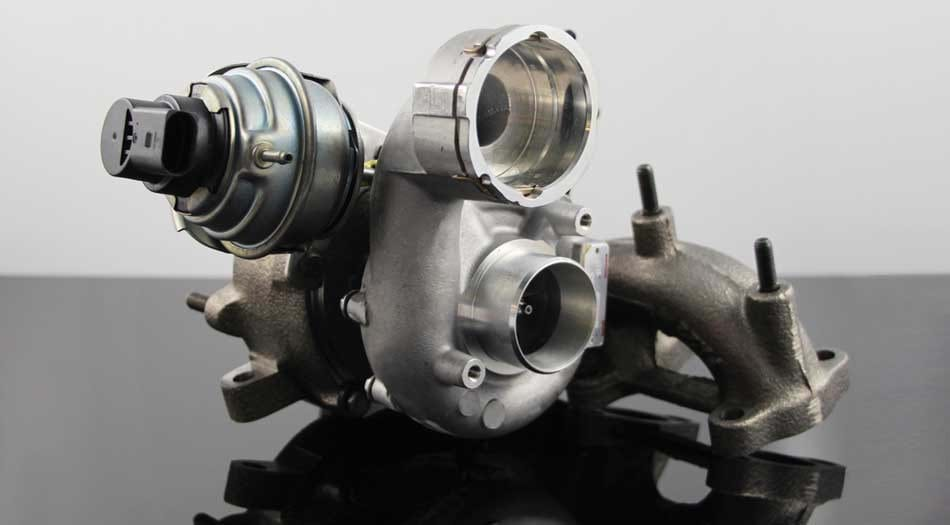About NAPA Echlin Turbochargers
Turbochargers | Turbocharger Parts

NAPA® Echlin® is proud to offer OE-quality turbochargers that are designed for long-term performance in complex engines. Whether it's new, reman, diesel, or gas, NAPA Echlin has you covered. Scroll down to learn more about the turbo market and NAPA Echlin's coverage and engineering.
The Growing Turbo Market
Current CAFE standards have pushed auto makers to increase fuel economy on new vehicles. With the rapid introduction of new smaller displacement turbocharged engines, consumers get V8 power while maintaining V6 fuel economy. Here are some industry predictions for turbochargers by 2020:
The Upward Trend in Turbo Coverage

A Growing Market
Vehicle manufacturers are adding turbos at a double-digit rate. Over the next 5 years, the turbo market is expected to grow to more than 8 million turbocharged vehicles.
Why Turbo?
While Diesel passenger cars are the main consumers of turbos, gasoline-powered vehicles utilize them as well. Why turbo? Simple. Downsized engines are needed to meet new fuel and emissions standards. Turbos improve power and economy up to 40%.
Full-Line Coverage
Our extensive research has helped us determine the numbers you’ll need to compete in this market. Our coverage for Chevrolet/GMC,Ford/International Powerstroke, Dodge Sprinter, Dodge/Cummins, Audi/VW and Saab will be expanded to include new applications for Jeep, Chevrolet Cruze and Cruze Diesel, Chevrolet/GMC Duramax, Ford/International, Dodge/Cummins, Ford, Volvo, Subaru, Mazda, BMW, Mercedes, Mini, Fiat, and Porsche. Now that’s what we call full line coverage!
Signs of a Damaged Turbo
If you hear whistling noises coming from the turbo, it’s likely due to an air/gas leakage caused by pre-turbine exhaust gas or air/boost leaks. Your first course of action should be checking all of the joints. If the noise continues, check the clearances and wheels for housing contact.
If the turbo rotor assembly has seized up or is difficult to rotate, the problem is likely tied to the degradation of the lubricating oil. When the oil degrades, it can lead to carbon buildup in the bearing housing interior. The carbon buildup will ultimately restrict rotation. Two other issues that can cause the rotor to seize up include insufficient or intermittent drop-in oil pressure and dirt in the lubricating oil. Another important detail to keep in mind is that a turbo has specific axial and radial rotor clearances. Sometimes, the clearances can be misdiagnosed as worn bearings. In reality, clearances that are out of specification may be associated with a lubricating oil issue. Check for insufficient oil, dirt ingress, and oil contamination with coolant.
To determine if the turbo has been damaged by foreign material, inspect the turbine wheel or impeller. You will clearly see any foreign material that has entered through the turbine or compressor housings. If the blades are damaged, the turbo is already destroyed. Look for metal that has come off the turbo in the intake tubes. Metal particles in this area may indicate a damaged engine.
To learn more about turbo diagnosis, read our Turbocharger Diagnosis Tips article.

